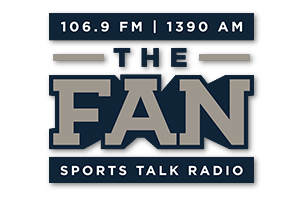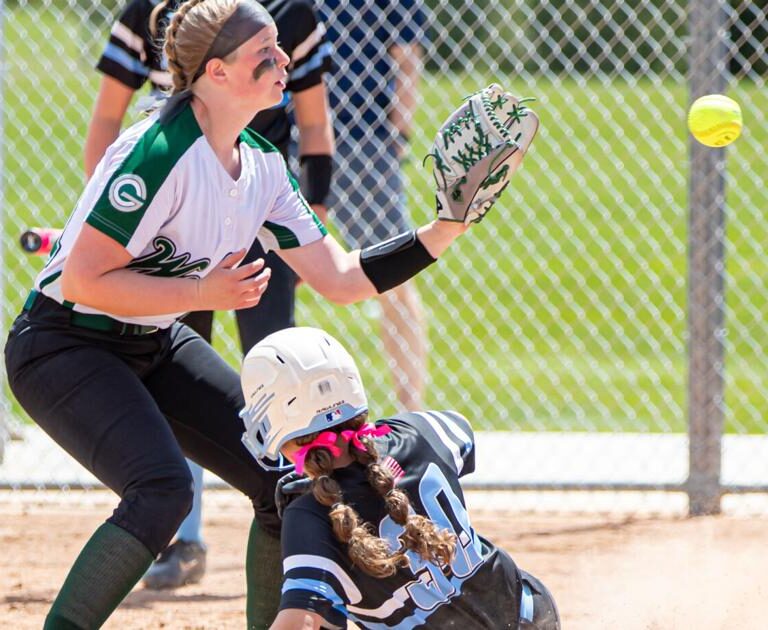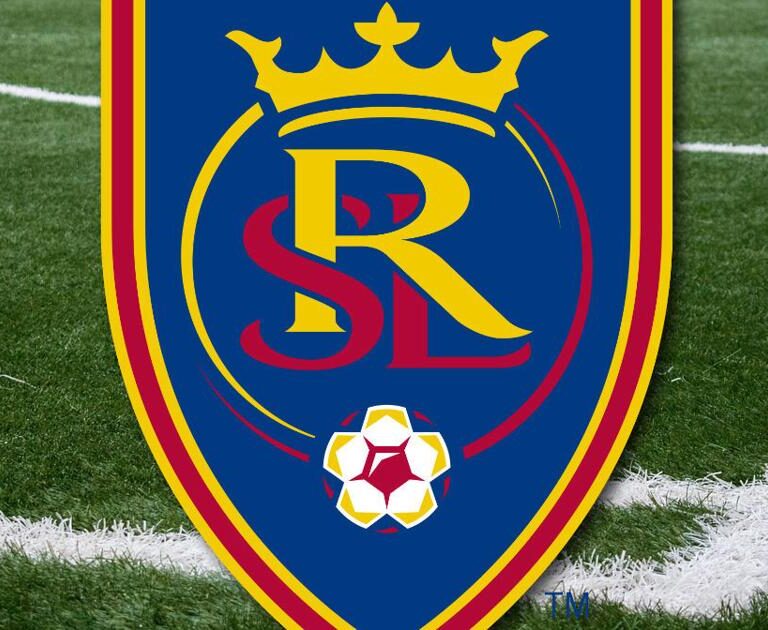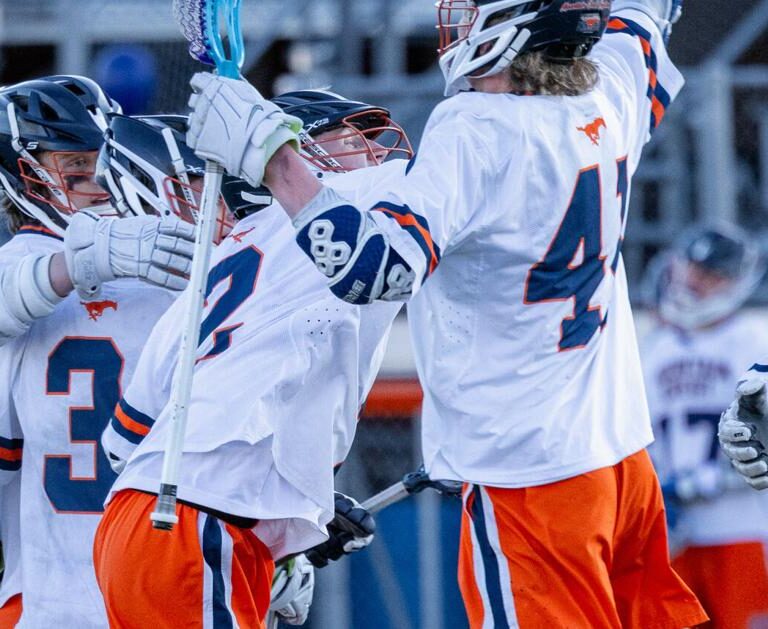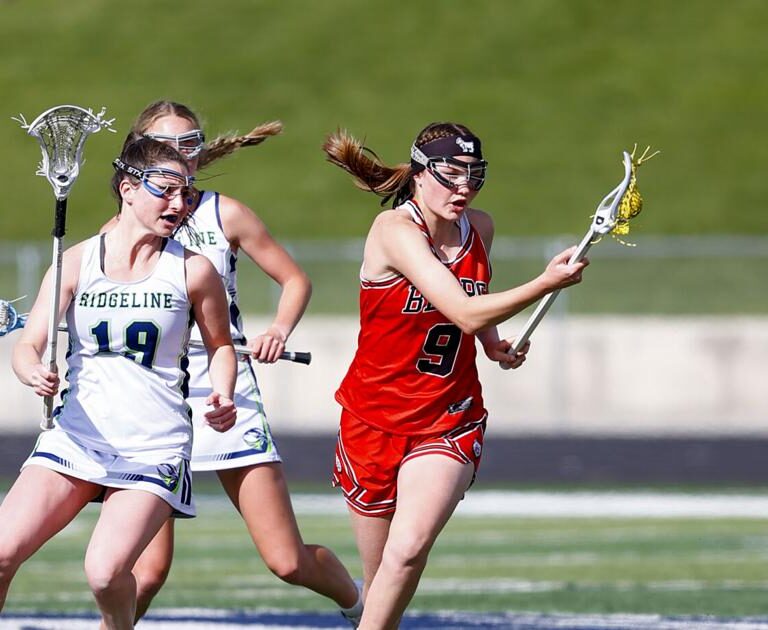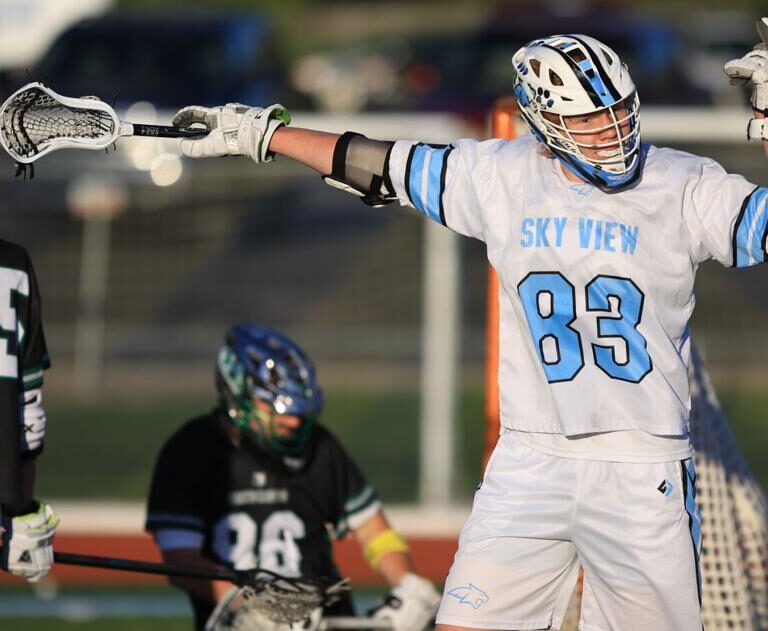Utah State vs Boise State football on Nov. 18, 2023. Photo by Clint Allen
LOGAN – Utah State head coach Blake Anderson spent much of his post-game comments following the Aggies’ humiliating 45-10 loss to Boise State talking, not about the game but rather about one major improvement his team needed.
 After all, there’s not a whole lot to go into detail on when you lose a game by 35 points.
After all, there’s not a whole lot to go into detail on when you lose a game by 35 points.
The week leading up to the loss to the Broncos, Anderson stated it would be “a critical part of the game” to be able to control the line of scrimmage.
Well, Utah State didn’t not stop the run, giving up a season-worst 352 rushing yards, and it did not hold the line on offense, giving up nine sacks between the three quarterbacks that ended up playing in the game. Not exactly controlling the line of scrimmage by most definitions.
“We got manhandled on both fronts,” Anderson said after the game. “Our O-line got manhandled and our defensive front got manhandled, and that’s that’s the nature of the night. We’ve got to close the gap somehow. We’ve got to recruit and got to developed and get better in those areas because we keep having the same conversation. And in a game like tonight with a team that’s built the way they are it’s even more visible, unfortunately.”
Anderson was hardly exaggerating when he said he keeps having “the same conversation” about being outmatched on the offensive and defensive line. Seemingly every single week this season Anderson has brought up the matchups on the line of scrimmage. After wins the narrative has been that the matchups were more in their favor. After losses, the inverse case was usually brought up as part of the explanation for the defeat.
When looking at every other position group for the Aggies, they seem set. They have a three-headed rushing attack with each of Davon Booth, Robert Briggs and Rahsul Faison capable of going for 100-plus yards in any given game (and all three have done so this season at some point). At wide receiver, Jalen Royals, Terrell Vaughn and Micah Davis terrorize opposing defensive backfields. Utah State even has a pair of solid tight ends with Broc Lane and Josh Sterzer.
On the defensive side, Ike Larsen, MJ Tafisi, Anthony Switzer and Devin Dye all play spectacularly at times with several other guys playing quality snaps. Guys like Michael Anyanwu, Avante Dickerson and JD Drew have also been reliable defenders on the back end.
The issues for the Aggies simply seem to be on the line of scrimmage. Not exclusively, but a larger share than should be normal. And for Anderson, it comes back to physicality up front.
“That physicality gap right now is our biggest issue,” Anderson said. “We’re good in the backhand at times. We can run by and get ourselves open, but we got to protect. We got to be able to move the pocket. We got to be able to run. We got to be able to stop the run.”
According to Anderson, there’s one overarching solution: get bigger through recruiting and further development.
A fair point to make about Anderson is that he’s had two full seasons, including three offseasons, to figure out the team’s issue with size. But Anderson didn’t come in knowing just how much he’d have to change things from how he recruited for a Sun Belt team like Arkansas State to what was required for a Mountain West team.
“The bodies are much bigger in this league up front on the O-line and D-line,” Anderson said. “We kind of saw that when we came out here and played. We had more speed and quickness at Arkansas (State) and in the Sun Belt. We’ve got more sheer size and power in this league. We’ve been able to get the skill that can run but we’re struggling to build the fronts.”
Anderson apparently wasn’t ready for the type of recruiting he’d have to do to handle teams like likes of Boise State, Wyoming or Air Force, and his style of recruiting isn’t the kind that will bring about a quick fix. Anderson doesn’t recruit very many one-and-done players, guys with the size, talent and experience to be elite plug-and-play newcomers. He brings in development projects, junior college prospects, overlooked Division I transfers from Power Five schools and the like.
That meant the 2022 season should have been a rebuilding year with many of the newcomers of that 6-7 team sticking around and making the jump to a far more productive 2023 season. Except that hardly any stuck around. The Aggies ended up having to restart that development process all over again by adding 40 newcomers to the team. Anderson restocked his roster, not with ready-made players tailor-fit to be heavyweights in the Mountain West, but guys that need time to develop into top-of-the-line starters.
It’s not a fun strategy since it means entire seasons can be given up to rebuilding, and there’s no proof yet that Anderson’s strategy will pay off in the end. But it does show a method to the madness.
When Anderson sought out all of the transfers he needed to build a workable roster for this year, it looks on paper as though he’s already trying to address size on the offensive and defensive fronts. His staff brought in numerous bigger players on both the offensive and defensive line. Ralph Frias, Shively Asonu Fua, Jr Sia, Vaughn Mamea, Clifton Mosley, Jake Hellman, K’Ieyone Iosua, Aloali’i Maui and Sir Mells are all 300-plus pound offensive or defensive linemen the Aggies added during the spring and summer. A few, like Maui and Frias, have seen extended time on the field. The rest have seen only sparse time (Mells and Mosley) and the rest have seen essentially zero time on the field.
Most of the players Anderson has tried to bring in thus far to address the issue of size and physicality simply haven’t seen the field enough to make an impact.
“We’re seeing improvement, but most of them haven’t played very much at all,” Anderson said. “You’ve got freshmen and redshirt freshmen and true sophomores. And even you take guys like Ralph who’s a big body but never really played meaningful snaps at Arizona State. All these guys are learning on the run and we’re learning kind of by making mistakes along the way.”
The theory is that these guys will develop and become the physical players the Mountain West requires teams to have. Anderson said he thinks they’ve “got better football ahead. Hopefully this week, but definitely in the future.”
For Anderson’s sake, let’s hope he’s right about that. If he is going to keep his job in Logan, Anderson needs to find a way to create a more physical team. He did a good job creating 8-5 teams year after year in the Sun Belt. That kind of success with could net him a long tenure in Logan, but that’s not what is happening right now. Utah State is looking another 6-6 season dead in the face, and while may be a giant step up from what longtime fans were used to seeing in the 1990s and early 2000s, but standards are growing. Utah State isn’t a place where mediocrity is a positive sign anymore.
